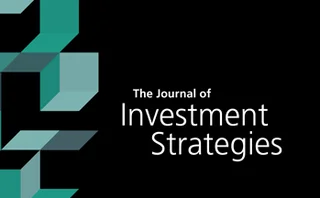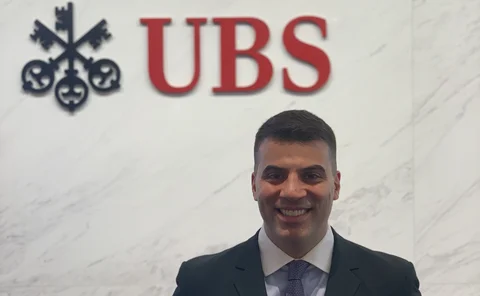Volatility
Fed Funds Futures in a Post-ZIRP World
As the FOMC returns to more active management of its key target rate, Federal Funds futures have experienced dramatic growth.
Forecasting value-at-risk
Alvin Stroyny and Tim Wilding build a dynamic risk framework for multi-asset global portfolios
What gold's rise means for rates, equities
It has been several years since we have seen volatility in gold. An increase in gold volatility can typically be associated with a change in sentiment and investor behavior. The precious metal has surged this year on increased demand for safe haven…
Libor transition and implementation – Covering all bases
Sponsored Q&A
SOFR futures volumes surge as overnight repo rates spike
Daily trading volume of one-month contracts climbs 156% between September 16-17
Can shorting leveraged exchange-traded fund pairs be a profitable trade?
In this paper, the authors examine if investors can profit from the underperformance of leveraged exchange-traded funds (ETFs) in long holding periods.
Equity derivatives house of the year: UBS
Asia Risk Awards 2019
House of the year, Malaysia: CIMB
Asia Risk Awards 2019
Structured products – The ART of risk transfer
Exploring the risk thrown up by autocallables has created a new family of structured products, offering diversification to investors while allowing their manufacturers room to extend their portfolios, writes Manvir Nijhar, co-head of equities and equity…
Dealers rush to redeem high-yielding structured notes
An estimated $60 billion of structured notes are at risk of being called before year-end
Dynamic volatility management: from conditional volatility to realized volatility
In this paper, the authors present a multiperiod portfolio management strategy that can be used to directly manage the realized volatility over a long time horizon.
The efficiency of the Anderson–Darling test with a limited sample size: an application to backtesting counterparty credit risk internal models
This paper presents a theoretical and empirical evaluation of the Anderson–Darling test when the sample size is limited.
The 2D tree–grid method
In this paper, the authors introduce a novel, explicit, wide-stencil, two-dimensional (2D) tree–grid method for solving stochastic control problems (SCPs) with two space dimensions and one time dimension, or, equivalently, the corresponding Hamilton…
SGX’s Koh defends clearing methods post-Nasdaq
Existing tools still work, despite external scrutiny on default management, says risk chief
How AI could tear up risk modelling canon
BlackRock, MSCI, LFIS among firms looking to replace traditional, linear risk models
A tech-driven transformation
A panel of experts explores how greater collaboration between risk and finance teams can garner significant benefits and add value, how technological innovation is making the regulatory landscape more complicated to navigate and produce transformative…
Search engine study shows limits of alternative data
Google Trends adds nothing to volatility predictions, researchers find
One size does not fit all – Adapting to meet investment goals
Guillaume Arnaud, global head of quantitative investment strategies (QIS), and Sandrine Ungari, head of cross-asset quantitative research at Societe Generale, explore the benefits of QIS for investors, why flexibility is crucial for investors to meet…
ETF investing – Building better portfolios
At the Asia ETF Forum 2019, Hong Kong Exchanges and Clearing (HKEX) welcomed industry experts from around the region to six key Asian exchange-traded fund (ETF) cities, offering attendees an updated view on the growing ETF market in Asia. This article…
Risk premia strategies – Lessons learned for the future
After a difficult 2018, investors are increasingly wary of risk premia, concerned that factors leading to underperformance might be a recurring problem. Imene Moussa, executive director at UBS, clarifies this issue






















